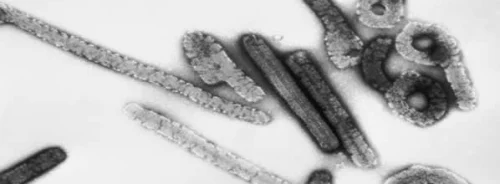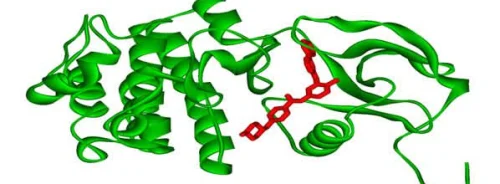With the increasing adoption of Electronic Health Records (EHRs), healthcare has witnessed a transformative shift from manual to digital data handling. Initially, the communication between healthcare providers relied heavily on faxes and later eFaxes. These methods, though innovative at the time, were labour-intensive and prone to errors. Faxes and eFaxes required manual data entry, which was not only time-consuming but also increased the risk of data entry errors that could potentially harm patients. The introduction of interoperable discrete data marked a significant advancement, allowing data documented in one EHR to be recorded as discrete, machine-readable codes. This meant that when another EHR system received this coded data, it could be seamlessly integrated into the patient's record. This transition not only improved the safety and efficiency of healthcare delivery but also reduced the clinical burden, enhancing overall satisfaction for clinicians, staff, and patients. Patients benefitted by avoiding repetitive form-filling and unnecessary duplicate testing as their data was readily available in the new caregiver’s system.
Push and Pull Interoperability: Enhancing Patient Care
The development of interoperability methods like the Direct Protocol revolutionised data sharing across healthcare providers. The Direct Protocol, designed to push Clinical Document Architecture (CDA) documents to a patient's care team, facilitated seamless data exchange among diverse EHR systems. Organisations like DirectTrust™ provided the trust framework necessary for these exchanges. However, the need for pulling data also became apparent, leading to the evolution of networks like eHealth Exchange and CommonWell, which support both push and pull functionalities. For instance, a primary care physician (PCP) can push a patient's data to a specialist before a consultation and receive the specialist's findings afterwards. Similarly, in emergency situations, an ED doctor can pull a patient's medical records to provide appropriate care even if the patient has no prior records in that facility. These push and pull capabilities are crucial for ensuring safe, efficient, and cost-effective healthcare delivery. The recent addition of push capabilities to the Carequality Framework and the planned implementation of national FHIR (Fast Healthcare Interoperability Resources) exchanges under the Trusted Exchange Framework and Common Agreement (TEFCA) further illustrate the dynamic advancements in healthcare interoperability.
National Interoperability Frameworks and Networks
The journey of healthcare interoperability is deeply intertwined with the history of medical records. From ancient times to the modern-day EHRs, medical records have evolved significantly, driven by the need for better patient tracking and communication among healthcare providers. The United States saw the emergence of electronic medical records (EMRs) and EHRs in the 20th century, followed by the development of national frameworks and standards to ensure data consistency and security. Proprietary networks for electronic prescribing in the early 2000s led to the creation of vendor-led initiatives like the CommonWell Health Alliance, which enabled data exchange among EHR systems. The proliferation of private health information networks highlighted the need for trust frameworks like DirectTrust™ and Carequality, which facilitated secure data sharing across different networks. These frameworks provide a common set of data-sharing policies, technical standards, and governance processes, ensuring that data exchange is secure and reliable. Notably, interoperability between networks regulated by different frameworks remains a challenge, but efforts like Carequality's push capabilities and the anticipated TEFCA implementation aim to bridge these gaps.
Implementing Interoperability: Key Considerations
Successfully implementing interoperability in healthcare requires careful planning and collaboration. Identifying a clinical lead and prioritising the organisation's interoperability use cases is essential, such as querying external patient data or sending and receiving referral summaries. Working closely with EHR vendors is crucial to understand the available technology and workflow options. Creating role-based workflows tailored to the organisation's needs ensures efficient data exchange processes. Engaging end-users by highlighting the benefits of the new workflows and providing comprehensive training materials fosters buy-in and adoption. Support during the initial implementation phase and ongoing monitoring to track project success are vital for sustained interoperability. Additionally, educating patients about data sharing and obtaining their consent is a critical component of the workflow. Interoperability projects often involve external organisations, necessitating clear communication and expectations, especially for speciality referrals and other collaborative care scenarios. Compliance with national interoperability requirements, such as those set by the Office of the National Coordinator for Health IT (ONC), and leveraging standards like HL7 and FHIR, further enhance the efficacy of data exchange initiatives. As healthcare continues to embrace interoperability, a collective approach focused on breaking down barriers and prioritising health equity will pave the way for a robust, interconnected health IT infrastructure.
The evolution of healthcare interoperability represents a monumental shift in how patient data is managed and shared across the healthcare ecosystem. From the early days of fax communication to the sophisticated digital interoperability frameworks of today, each advancement has aimed at improving patient safety, reducing clinical burdens, and enhancing the overall quality of care. The implementation of push and pull data exchange methods, supported by national frameworks like DirectTrust™, Carequality, and the upcoming TEFCA, underscores the critical need for seamless data sharing. These efforts ensure that healthcare providers have timely access to accurate patient information, ultimately leading to better patient outcomes. As we look to the future, continued innovation, adherence to standardised protocols, and collaborative efforts among healthcare stakeholders will be essential. By embracing these advancements and addressing the challenges ahead, we can achieve a truly interconnected and efficient healthcare system that benefits providers and patients alike.
Source: HIMSS
Image Credit: iStock






